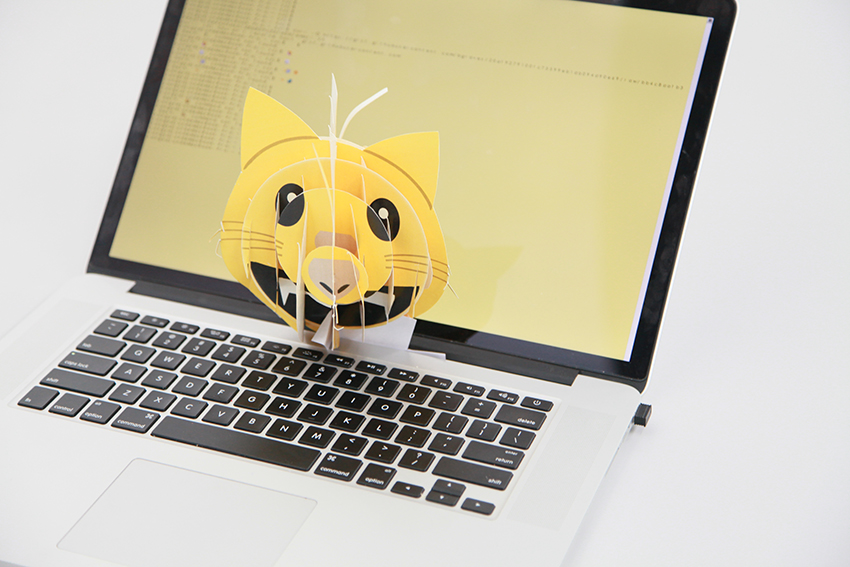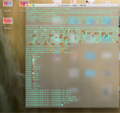Emoji Tour: Difference between revisions
No edit summary |
No edit summary |
||
| (19 intermediate revisions by 2 users not shown) | |||
| Line 1: | Line 1: | ||
{{Article | {{Article | ||
|MainNavigation=No | |MainNavigation=No | ||
}} | }} | ||
During 2 weeks Hackers & Designers relocated | [[File:Emoji1.jpg]] | ||
Applying concepts of programming to design and design methods the students learned about simple software constructions and how to alter code with simple means. Using Emoji as material, and common ground we bridged misunderstandings and misconceptions created through language differences in ‘English – Chinese’ and/or ‘Design – Programming’. With Emoji Babble we offered fun access to coding environments and invite the students to experience and interact with the code and eventually design with code. | |||
===Emoji Babble=== | |||
During 2 weeks Hackers & Designers relocated to China to give a hands-on introduction into the world of creative coding to art and design students in Chang Sha and Beijing. | |||
Applying concepts of programming to design and design methods the students learned about simple software constructions and how to alter code with simple means. Using Emoji as material, and common ground we bridged misunderstandings and misconceptions created through language differences in ‘English – Chinese’ and/or ‘Design – Programming’. With "Emoji Babble" we offered fun access to coding environments and invite the students to experience and interact with the code and eventually design with code. | |||
We started the introduction to the command line with customising the design of the Terminal. By changing the bashfile and changing the commands to Emoji the students learned about simple command line concepts in a visual way. See full workshop outline: [[Emojiterm|Learning about the Terminal with Emoji]] | |||
At the end of the workshop the students were able to create small questionnaires about the topic of Emoji using the programming language [http://www.emojicode.org/ Emojicode], which was used as a way to generate content for a collective zine. | |||
Part of the workshop was also an observation exercise where students had to go outside and take pictures of Terminal commands in 'real life'. The next step was to conceptualise the commands and translate them into a 3D emoji. See full workshop outline: [[Emojicode|Learning coding with Emojicode]] | |||
[ | Thanks to our collaborators [[Minhong Yu]] (translation and coordination) and [[Martijn van Boven]] (who joined the tutor team in Beijing) | ||
<gallery> | |||
Emoji2.jpg | |||
Emoji3.PNG | |||
Emoji4.JPG | |||
Emoji5.jpg | |||
</gallery> | |||
[[Category:Tools]] | |||
Latest revision as of 20:45, 5 January 2020
Emoji Babble
During 2 weeks Hackers & Designers relocated to China to give a hands-on introduction into the world of creative coding to art and design students in Chang Sha and Beijing.
Applying concepts of programming to design and design methods the students learned about simple software constructions and how to alter code with simple means. Using Emoji as material, and common ground we bridged misunderstandings and misconceptions created through language differences in ‘English – Chinese’ and/or ‘Design – Programming’. With "Emoji Babble" we offered fun access to coding environments and invite the students to experience and interact with the code and eventually design with code.
We started the introduction to the command line with customising the design of the Terminal. By changing the bashfile and changing the commands to Emoji the students learned about simple command line concepts in a visual way. See full workshop outline: Learning about the Terminal with Emoji
At the end of the workshop the students were able to create small questionnaires about the topic of Emoji using the programming language Emojicode, which was used as a way to generate content for a collective zine.
Part of the workshop was also an observation exercise where students had to go outside and take pictures of Terminal commands in 'real life'. The next step was to conceptualise the commands and translate them into a 3D emoji. See full workshop outline: Learning coding with Emojicode
Thanks to our collaborators Minhong Yu (translation and coordination) and Martijn van Boven (who joined the tutor team in Beijing)




